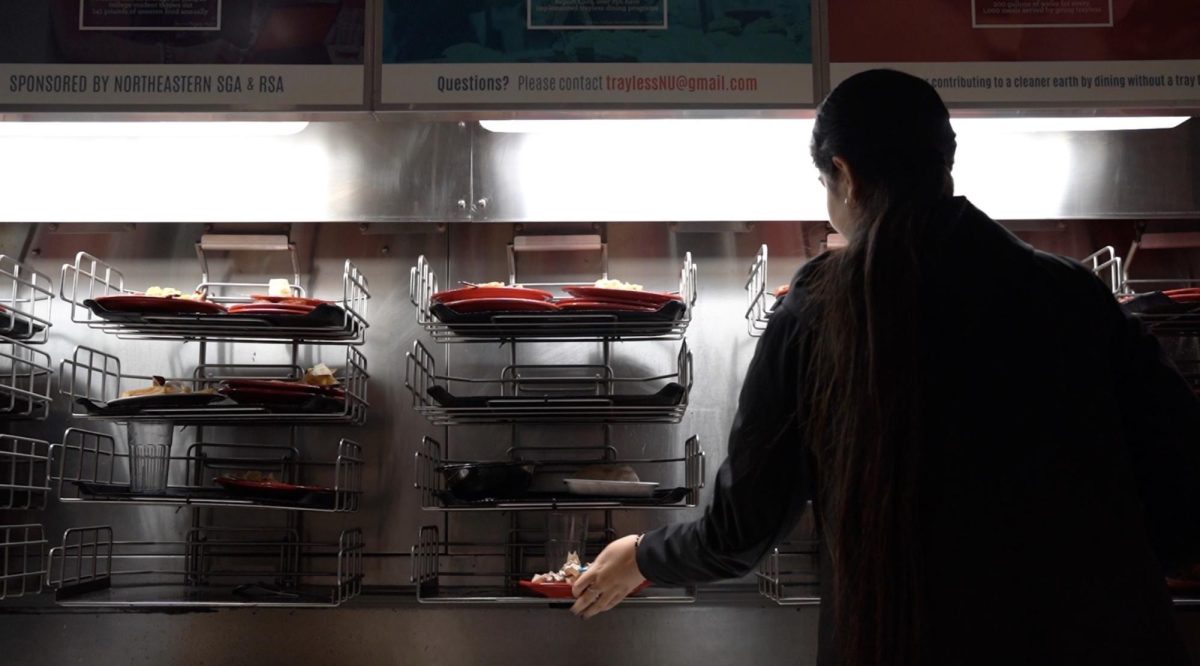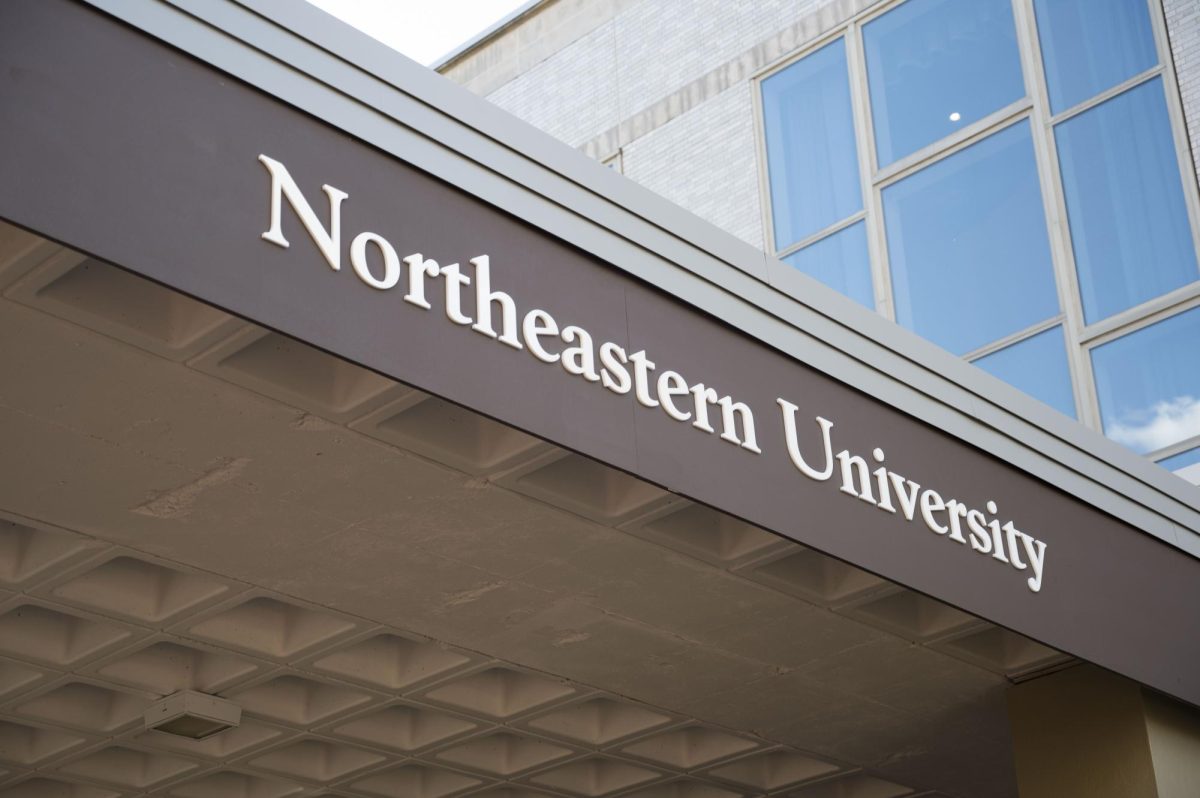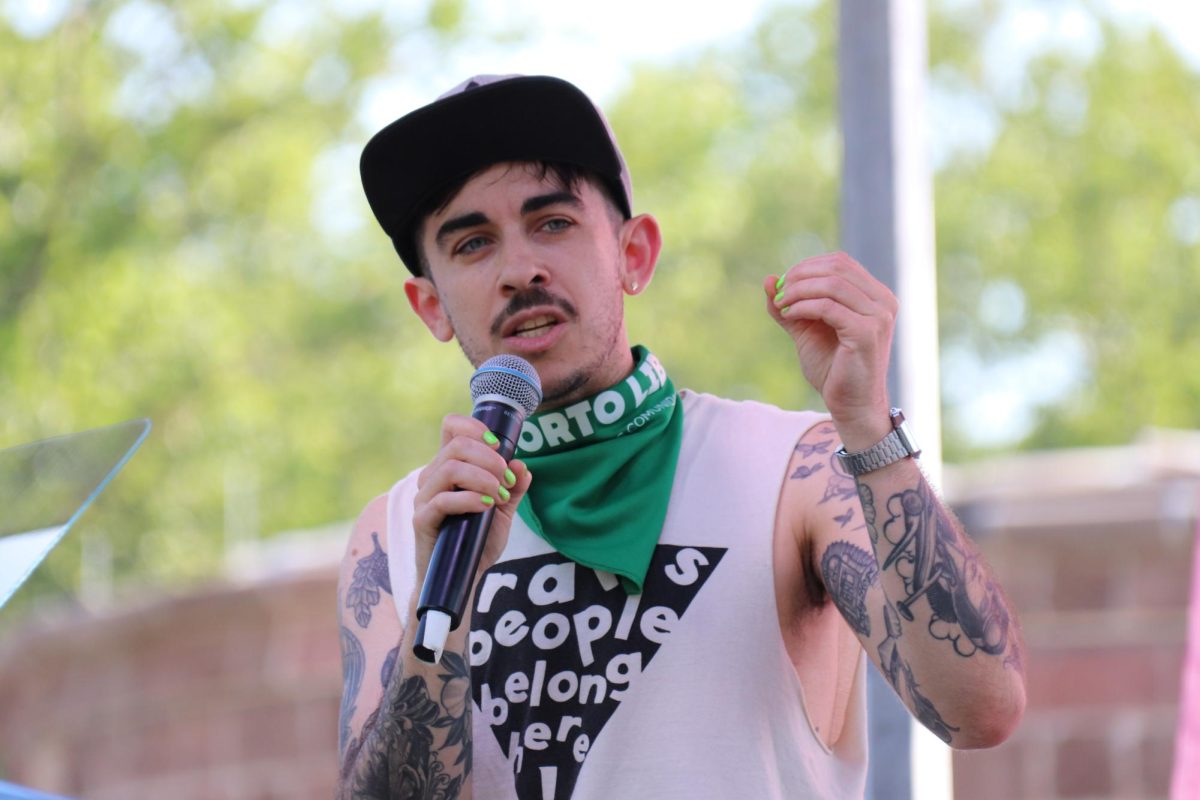Boston is a city full of bikes, and when one goes missing it’s about as surprising as the T not showing up on time.
But when one bike disappeared around the beginning of the semester from what had become its fixed location on Huntington Avenue, it struck me when no one – myself included – seemed to notice.
It was a bike that stood out-a single-speed, beach bike, probably from the early 80s, with fenders over the wheels and long handlebars that sloped upward. The rims were large and the tires were fat. The top of the frame curved down below the pedals, perhaps to accommodate a skirted rider. A thin metal guard covered the chain and lone derailleur gear.
Then there was the color. Spokes and all, the bike was spray-painted stark white.
Locked alone to a lamp post across the street from the inbound side of the Northeastern T stop, it was difficult to miss.
What made the bike unique, however, was not its style or color, but a wooden sign that hung between the seat and handlebars. In blue block letters it read, “A BICYCLIST WAS STRUCK HERE.”
The bicyclist was Gordon Riker, a 22-year-old Massachusetts College of Art and Design graduate. The afternoon of April 4, he’d been riding his fixed gear from his Jamaica Plain apartment to a job on Newbury Street when a collision with a taxi threw him under the wheels of a dump truck. He died instantly at the corner of Huntington Avenue and Forsyth Street.
I didn’t know Riker, but I remember the day of his accident well.
It was near freezing, and an ugly mix of rain and snow had begun to fall sometime in the afternoon. The streets and sidewalks were slick.
I had just left class when I rounded the corner onto Forsyth Street and saw the commotion at the intersection ahead of me. A half-dozen, maybe more, police cars were parked haphazardly on Huntington Avenue. The road had been roped off for three blocks with yellow police tape and officers were ushering along crowds of pedestrians who, like me, were wondering what had happened.
I reached the corner to see paramedics lift Riker’s body into the back of an ambulance on a stretcher. They drove off, leaving behind Riker’s shattered helmet, cell phone, right shoe, messenger bag and mangled road bike.
Within days, someone had erected Riker’s “ghost bike” memorial near the site of his death, where it would remain for more than four months. I passed it almost daily all summer, occasionally stopping to light the candle on the ground next to it.
It took weeks, maybe as long as a month, for me to notice it was missing, but when I did, I was furious.
I was ready to demonize whoever cut the cable lock and carted the bike away. Was it the philistines down at the Massachusetts Bay Transportation Authority? Was the city tired of looking at it? Did the police take it down arbitrarily? Or was Northeastern making the campus friendly and presentable for move-in day? When I thought about what dumpster it was sitting in, or what thief was repainting it, I felt sick.
But after a few phone calls, I realized how much I’d overreacted.
It turned out Northeastern facilities workers removed the memorial, but not without good reason and what sounds like some genuine consideration.
Jack Malone, director of Physical Plant Services, said Northeastern had received phone calls complaining about the bike’s location and the problems it was causing. But for more than a month after calls started coming in, he said, the department left the bike in its place.
“There was a great sensitivity about the whole issue,” said Malone, who saw the grim scene of Riker’s accident. “It was a terrible tragedy. We left it up for at least a month after the first requests. Even then, it was such a hard thing to do.”
Boston is full of bicyclists. Census statistics show some 6,000 to 8,000 of them. Bostonians commute by bike, and many more bike recreationally. Mayor Thomas Menino, himself a recent cycling convert, has promised to take steps to make the Hub a more “bike friendly” city. He recently appointed a new bike coordinator to help carry out his plans, which include the creation of more bike lanes, an online map system and the installation of 250 new bike racks.
For the sake of motorists and bicyclists alike, the city should hold Mayor Menino to his word. And as we do, we should remember that it’s tragedies like Riker’s accident that give urgency to the mayor’s lofty plans.
The memorial is gone, but the memory of Riker – and the crash that killed him – should endure, even among those of us who never knew him.
– Derek Hawkins can be reached at [email protected]









